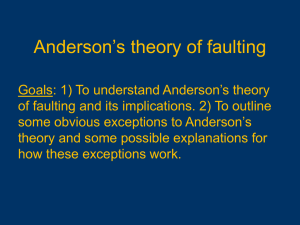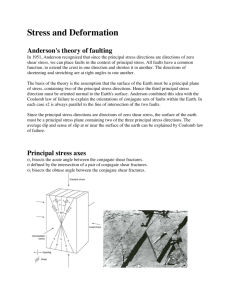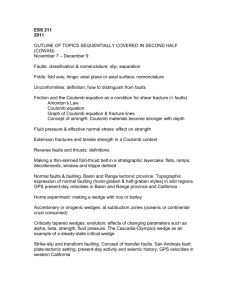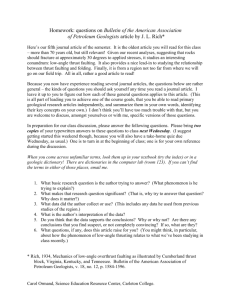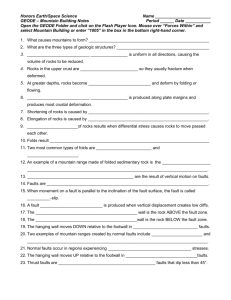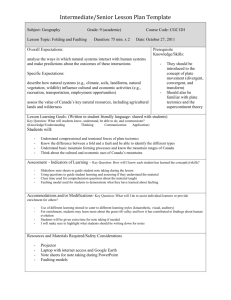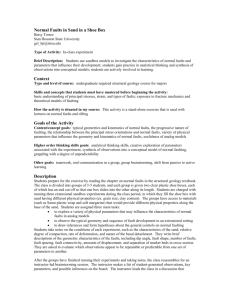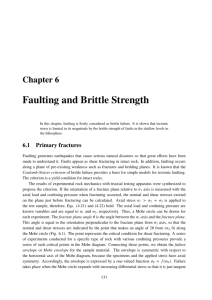Anderson`s theory of faulting: In
advertisement
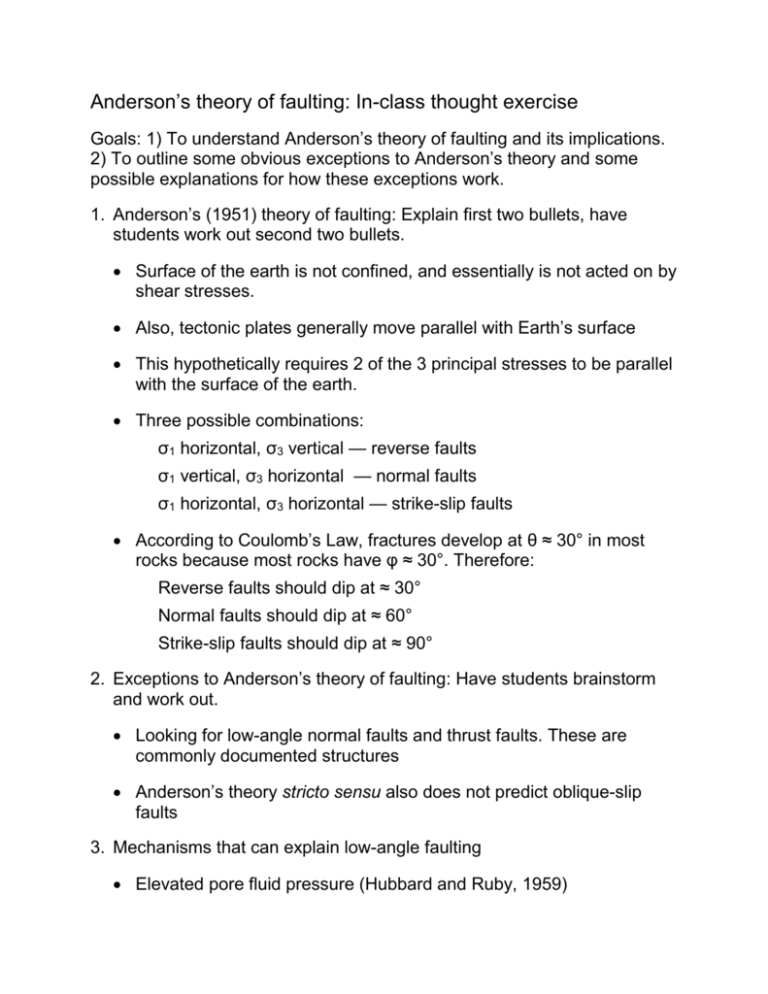
Anderson’s theory of faulting: In-class thought exercise Goals: 1) To understand Anderson’s theory of faulting and its implications. 2) To outline some obvious exceptions to Anderson’s theory and some possible explanations for how these exceptions work. 1. Anderson’s (1951) theory of faulting: Explain first two bullets, have students work out second two bullets. Surface of the earth is not confined, and essentially is not acted on by shear stresses. Also, tectonic plates generally move parallel with Earth’s surface This hypothetically requires 2 of the 3 principal stresses to be parallel with the surface of the earth. Three possible combinations: σ1 horizontal, σ3 vertical — reverse faults σ1 vertical, σ3 horizontal — normal faults σ1 horizontal, σ3 horizontal — strike-slip faults According to Coulomb’s Law, fractures develop at θ ≈ 30° in most rocks because most rocks have φ ≈ 30°. Therefore: Reverse faults should dip at ≈ 30° Normal faults should dip at ≈ 60° Strike-slip faults should dip at ≈ 90° 2. Exceptions to Anderson’s theory of faulting: Have students brainstorm and work out. Looking for low-angle normal faults and thrust faults. These are commonly documented structures Anderson’s theory stricto sensu also does not predict oblique-slip faults 3. Mechanisms that can explain low-angle faulting Elevated pore fluid pressure (Hubbard and Ruby, 1959) a. Must have very low σeff at fault surface — illustrate with Mohr circle b. σeff must be relatively high elsewhere, otherwise fault block will deform internally and low-angle fault will not slip c. To my knowledge, nobody has fully explained how this can work Pre-existing weakness in rocks Experiments by Donath (1961) show that a pre-existing anisotropy such as bedding or cleavage can allow fractures to form at 10–15° to σ1 We know that faults commonly follow weak layers Rolling-hinge model for crustal-scale low-angle normal faults — widely accepted, but still somewhat controversial a. Illustrate core complex geometry with Ruby-East Humboldt range b. Fault initiates at surface at high angle and soles into a low-angle fault (mylonite zone) below the brittle-plastic transition c. As fault slip progresses and crust is thinned, hot, buoyant crust rebounds isostatically d. This geometry allows the slipping segment of the fault to undergo frictional sliding e. May be aided my large additions of mantel-derived basaltic magma to the lower crust and/or solid-state flow into the domain high extensional strains
